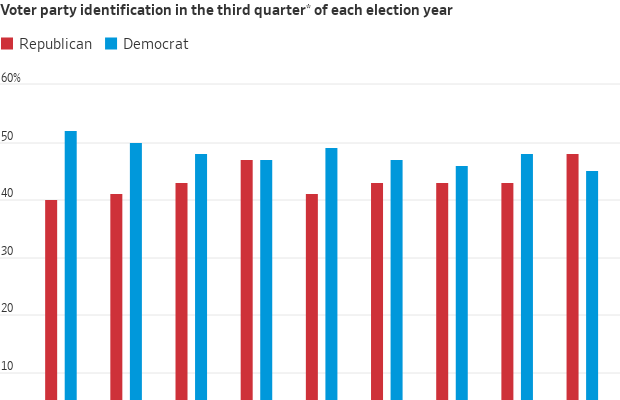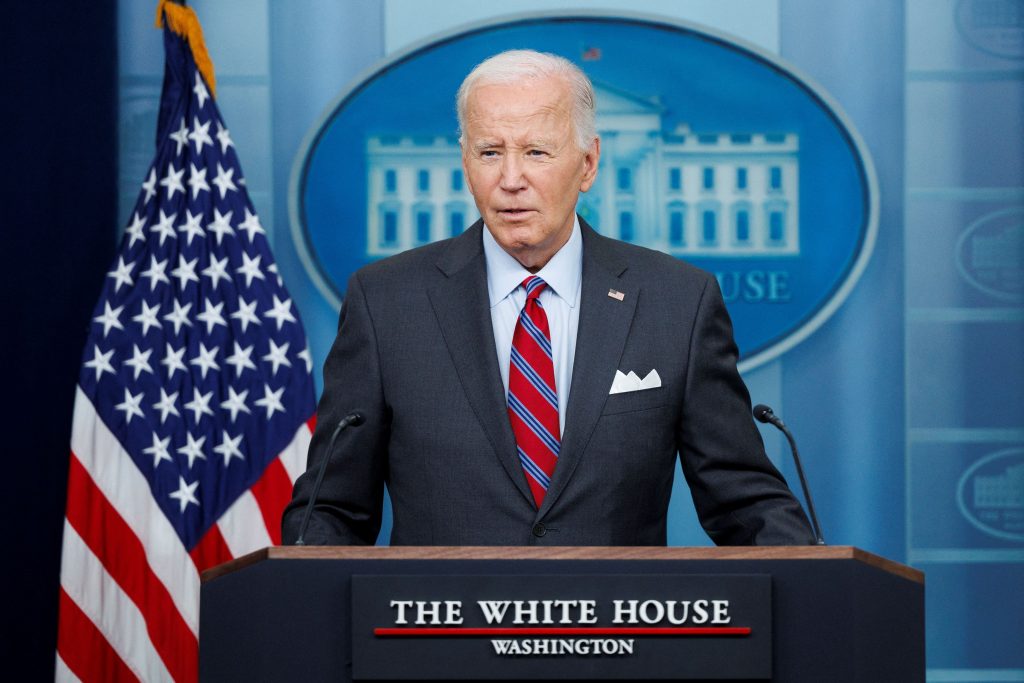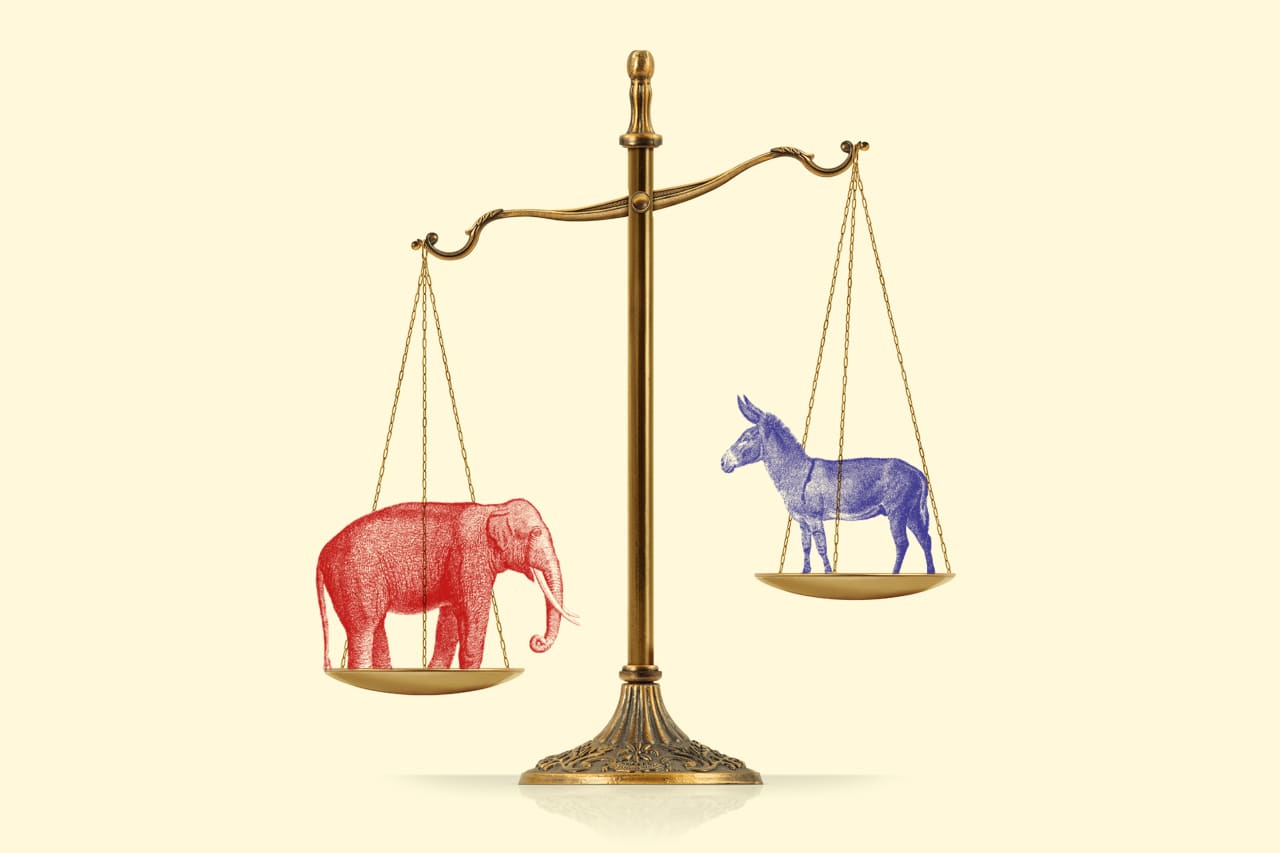Beneath the headline results in many polls, something unusual has turned up with big implications for politics: More voters are calling themselves Republicans than Democrats, suggesting that the GOP has its first durable lead in party identification in more than three decades.
The development gives former President Donald Trump an important structural advantage in the November election. But other factors could prove more important to the outcome. Democratic Vice President Kamala Harris still leads narrowly in many polls, in some cases because she does well with independent voters.
Bill McInturff , a GOP pollster who works on NBC News surveys, first noticed in May that more voters were calling themselves Republicans. “Wow, the biggest deal in polling is when lines cross, and for the first time in decades, Republicans now have the national edge on party ID,’’ he wrote. He called the development “the underrecognized game-changer for 2024.’’
In combined NBC polls this year, Republicans lead by 2 percentage points over Democrats, 42% to 40%, when voters were asked which party they identified with. That compares with Democratic leads of 6 points in 2020, 7 points in 2016 and 9 points in 2012.
“Republicans being 5 to 9 points down on party identification—that is like running uphill,’’ McInturff said. “We don’t know the election’s outcome, but we know Republicans have a better shot at doing well if party ID is functionally tied, with perhaps the smallest tilt toward Republicans.’’

Gallup also found more voters identifying as Republican than Democratic, by 3 points in its July-to-September surveys. It was the first time that the GOP had an advantage in the third quarter before a presidential election in Gallup surveys dating to 1992.
Pew Research Center found the GOP with a 1-point lead this spring in an extensive, 5,600-person poll it conducted to create benchmarks for its other surveys. As with Gallup and NBC polls, each party’s share of voters included people who call themselves independents but also say they consistently lean toward one party.
The last time that presidential Election Day exit polls found Republicans on a level playing field with Democrats in party identification was in 2004, when the two were tied. That was also the only year in about three decades that Republicans won the national popular vote.
“It’s definitely unusual,’’ Jeffrey Jones , senior editor of Gallup polling, said of the GOP advantage. Gallup said party affiliation is one of several foundational factors favoring the GOP this year, along with its finding that Republicans are trusted more to handle the economy and immigration, which voters see as the nation’s most challenging problems.
Not all polls find the same tilt toward the GOP, and a lead in party affiliation isn’t a guarantee of success. In the 2022 midterm elections, Republicans turned out more voters than Democrats did in Pennsylvania, Arizona and Michigan, according to the AP VoteCast survey of the electorate. But independent voters favored Democrats so heavily that the party won the governor’s races in all three states, as well as Senate races in Pennsylvania and Arizona. Democrats also benefited from an erosion of support among Republican voters for many GOP candidates who aligned themselves closely with Trump.
More recently, NBC’s September poll found Republicans with a 1-point advantage on party identification, and yet Harris led Trump by 5 points. Her lead rested on an advantage among independent voters and that she was winning more than 20% support among Republicans who don’t consider themselves part of Trump’s “Make America Great Again’’ movement, a group that ultimately could shift back to Trump.
Similarly, a New York Times/Siena survey released this week found Republicans outnumbering Democrats among likely voters by 1 percentage point, but Harris leading Trump by 3 percentage points. Defections from Trump among some GOP voters was one reason for her lead.
Patrick Ruffini , a Republican pollster, said the GOP advantage in party identification lessens the pressure on Trump to win over independent or swing voters, “but it does not say that Trump is going to win’’ this year.
“It’s a loose indicator that you have a number of people who are disappointed in the Democratic Party’s performance,’’ Ruffini said. “It should be a good indicator for Trump. But as we saw in 2022, it doesn’t mean the candidates who are running are going to maximize their advantage.’’
Jones said party identification tends to rise and fall in tandem with views of the president. In combining all its surveys in a given year, Gallup has found the GOP leading in party identification only three times since 1991. That was in 1991, after President George H.W. Bush led allies in the first Gulf War, and in 2022 and 2023, as President Biden’s job approval ratings sank.
The GOP has held a short-term edge on occasion, such as after the Sept. 11, 2001, terrorist attacks, when voters rallied behind President George W. Bush . But the advantage soon faded.
Party identification in polling gives a snapshot of voters’ current thinking about the two parties, and it can be a different picture than the one drawn by voter-registration data. Many analysts said more voters nationwide are registered as Democrats than as Republicans, though the numbers include some estimates because many states don’t record a party affiliation when people register to vote.
L2, a nonpartisan company that collects and updates the voter lists from each state, said more than 38% of U.S. voters are Democrats and 32% are Republicans, based on state records and its modeled calculation of voter preferences in states that don’t register voters by party.
Election results show that some of those Democrats have been voting Republican for years in states such as Pennsylvania, and that some with GOP registration back Democrats. They just haven’t updated their voter-registration records.
Write to Aaron Zitner at aaron.zitner@wsj.com






